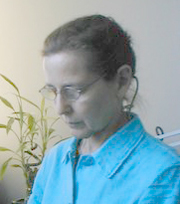Chinese and Japanese AcupuncturePowerful Patient, 2009 Week 25Host: Joyce Graff, http://powerfulpatient.org, editor@vhl.org 800-767-4845
Joyce talks with Dorothy Boime, Registered Nurse and Licensed Acupuncturist, about the applications for Chinese and Japanese acupuncture in healing various physican and emotional disorders. Learn about Qi (pronounced Chee) and its role in health and healing.
About Dorothy Boime
Dorothy is a quiet and gentle woman who has been a registered nurse, mostly in psychiatric settings, for some twenty years. She has studied Asian martial arts for 24 years -- 14 years of study in Aikido (where she holds a 2nd degree black belt), and 10 years of study of Wu style Tai Chi. She studied acupuncture at the New England School of Acupuncture, from which she holds the degree of Master of Acupuncture (MAc). She is board certified by the National Certification Commission for Acupuncture and Oriental Medicine.
“My background as an R.N. enables me to approach my patients’ problems from both Western and Traditional Chinese Medical perspectives. Additionally, my extensive experience as a psychiatric nurse enhances my ability to treat patients with emotional problems and issues. My practice includes treating the elderly for a variety of age-related problems.
“For those who dislike or feel uncomfortable with needles, I also use my fingers (acupressure) and a non-inserted touching needle to move Qi energy. My goals as an acupunturist are to improve the physical, emotional and spiritual well-being of my clients, and to promote a meditative and centered state of mind.”
About Acupuncture
The following definition is from Wikipedia.
Finding an Acupuncturist
For more information about acupuncture and about Dorothy’s practice, see
To view a good video on what to look for in an acupuncturist, see
To find a list of acupuncturists in your area, go to
|
